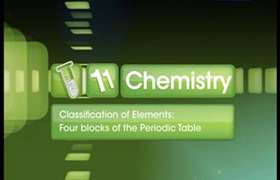CBSE Class 11-science Answered
what are exceptional cases in a periodic table in period and group wise
Asked by Vignesh Ms | 01 Aug, 2015, 08:53: PM
- Variation in ionisation enthalpies: Ionisation enthalpy increases with increases in atomic number along the period. Some elements show irregularities in this trend due to type of electron to be removed and the extra stability of the exactly half-filled and completely filled electronic configurations.
- Variation along the period: In the second period Li to Be, the ionisation enthalpy increases due to increased nuclear charge and smaller atomic radius of Be as compared that of Li. For Be to B, although the nuclear charge of B is more than that of be, yet the ionisation enthalpy of B is lower than that of Be. For B to C to N, the first ionisation enthalpy of these elements keeps on increasing due to progressively increasing nuclear charge and decreasing atomic radius. For N to O, the first ionisation enthalpy of oxygen is lower than that of N although the nuclear charge of O is higher than that of nitrogen. For O to F to Ne, the first ionisation enthalpy increases from O to F to Ne because of the increasing nuclear charge.
- Similar variations in the first ionisation enthalpies of the elements of the third period have been observed.
- Variation of electron gain enthalpy in a group: In general, the electron gain enthalpies become less negative as we move down a group. But the electron gain enthalpies of some of the elements of second period that is O, and F are however, less negative than the corresponding elements that is s and Cl of the third period.
- Thus the electron gain enthalpy of F is unexpectedly less negative than that of Cl.
- Also the electron gain enthalpy of noble gases is positive as atoms of these elements have completely filled subshells.
- Variation in atomic radii: The atomic radius abruptly increases as we move from halogen (F) to the inert gas (Ne). This is due to the reason that in case of inert gases all the orbitals are completely filled and hence the electronic repulsions are maximum.
- Variation of valence in a period: As we move across a period from left to right, the number of valence electrons increases from left to right, the number of valence electrons increases from 1 to 8. But the valence of elements with respect to H or O first increases from 1 to 4 and then decreases to zero.
Answered by Prachi Sawant | 02 Aug, 2015, 04:48: PM
Concept Videos
CBSE 11-science - Chemistry
Asked by defence | 15 Aug, 2019, 05:24: PM
CBSE 11-science - Chemistry
Asked by drbharatkaila | 25 Nov, 2018, 06:17: PM
CBSE 11-science - Chemistry
Asked by pa1980144 | 14 Oct, 2018, 03:27: PM
CBSE 11-science - Chemistry
Asked by arunavamitra50 | 10 Jun, 2018, 07:17: PM
CBSE 11-science - Chemistry
Asked by Topperlearning User | 04 Jun, 2014, 01:23: PM
CBSE 11-science - Chemistry
Asked by Topperlearning User | 27 Jun, 2016, 12:59: PM
CBSE 11-science - Chemistry
Asked by Topperlearning User | 10 Sep, 2014, 12:07: PM
CBSE 11-science - Chemistry
Asked by Topperlearning User | 27 Jun, 2016, 12:59: PM
CBSE 11-science - Chemistry
Asked by Topperlearning User | 10 Sep, 2014, 12:06: PM
CBSE 11-science - Chemistry
Asked by Topperlearning User | 04 Jun, 2014, 01:23: PM




